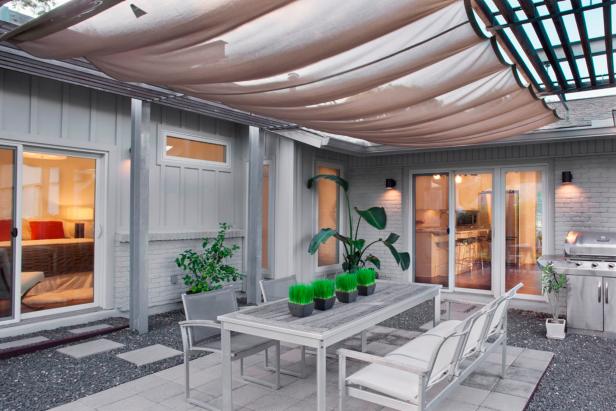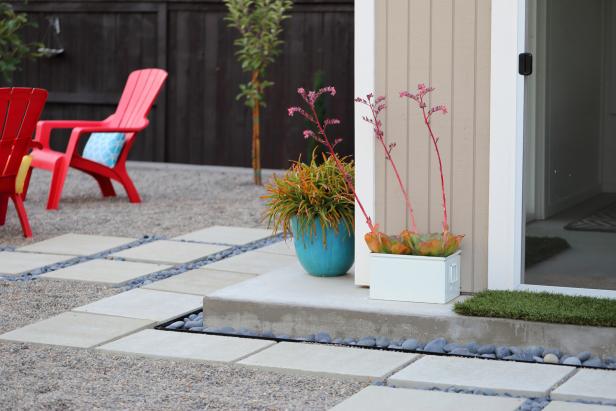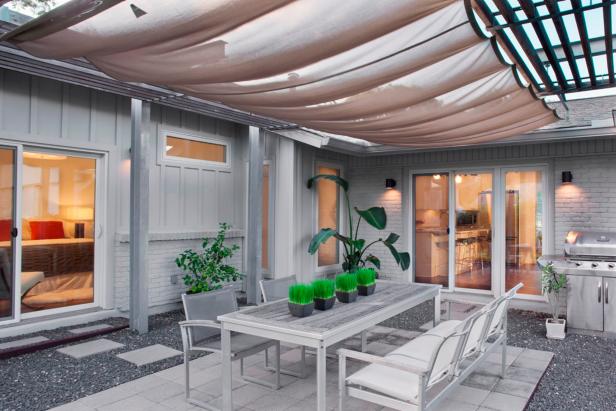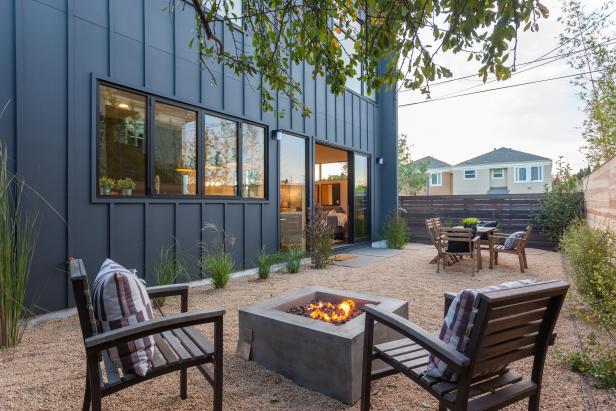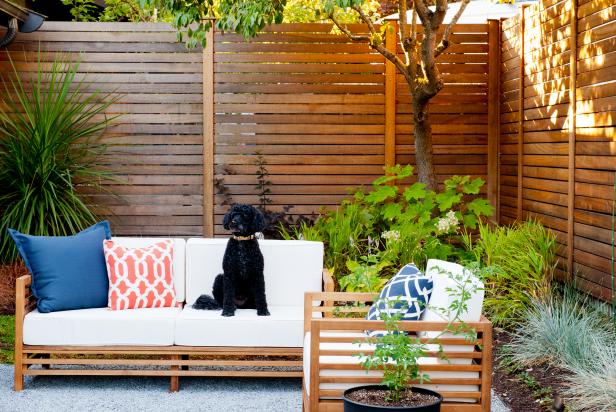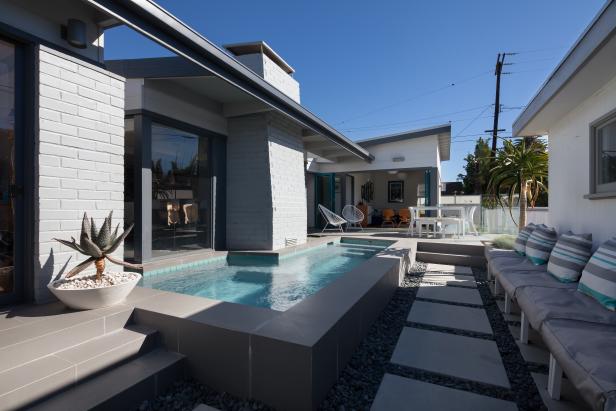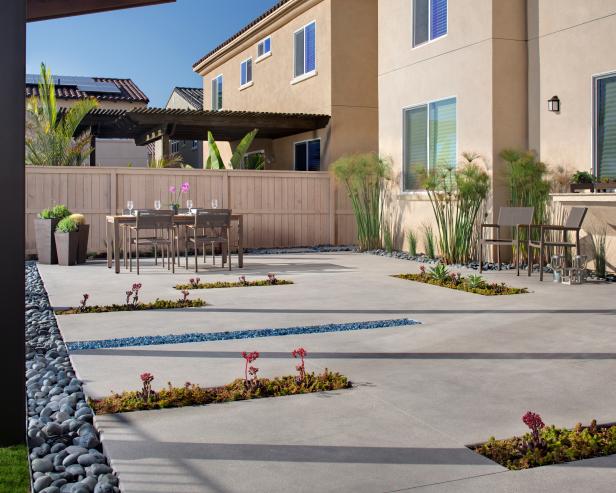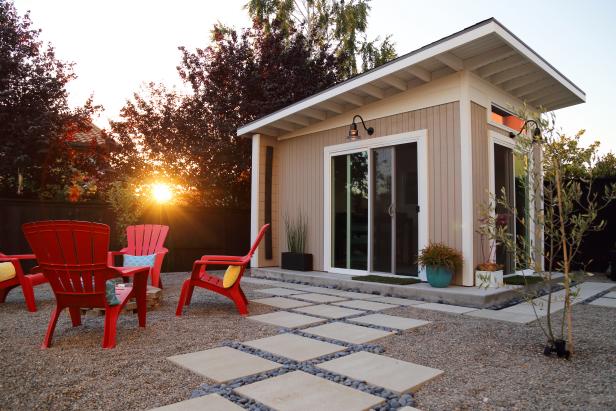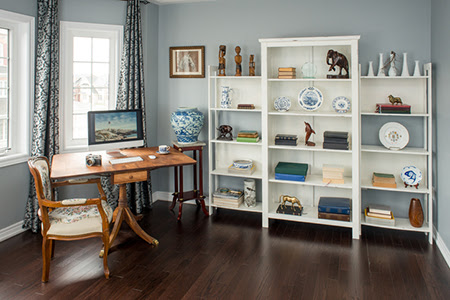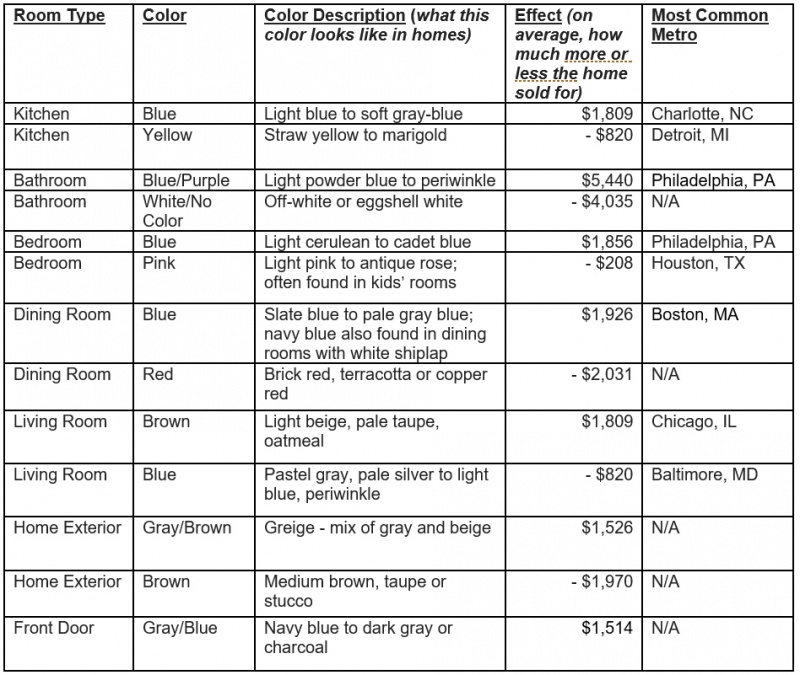6 Easy DIY Projects That Will Boost Your Home’s Value
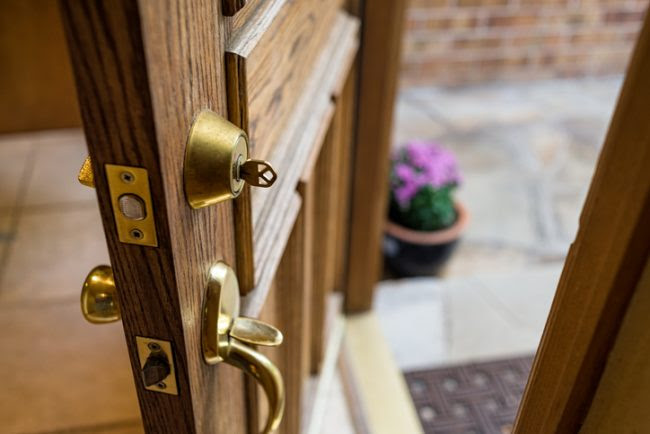

Not only will these DIY’s boost your home’s value, but you get to enjoy them too.
The satisfaction of creating something productive is powerful!
Your house is likely to be the biggest investment you make in your entire life. Whether you’re planning to sell it or you’re there for the long haul, it is important to take care of your investment. As any real estate agent will tell you, the first thing people notice about your home is the exterior. You need strong curb appeal to make a good first impression.
With that in mind, here are six simple DIY projects to help boost your home’s value:
Invest in Your Landscaping
Landscaping is often regarded as one of the top three ways to add value to your home in terms of return on investment. HomeGain.com conducted a survey of 2,000 brokers in 2007. The results indicated you could possibly quadruple an investment of $400-$500 on well-planned landscaping.
That said, just throwing a couple hundred dollars at plants is not a good approach. Instead, focus on creating a healthy, vibrant lawn. Fill in dead or sparse areas, fertilize, and clean up edges along your sidewalk, pathways and gardens. Trim overgrown bushes and shrubberies and cut down tangled tree branches. Plant flowers and plants to brighten up your landscape—just be sure to plant perennials that will come back year after year, not annuals that will die within a year and never return. Also, look for plants that are native to your region or are drought-tolerant. They need less water and maintenance, saving you money in the long run.
Upgrade Your Front Door
Your front door is the entryway to your home and it sets the tone for the rest of the house. Make a good impression by ensuring your home’s entry point (including the area directly surrounding the door) is attractive and eye-catching.
The first thing to consider here is whether to replace your existing door or not. If the door you have is good quality and a style you like, you can save some money by just freshening it up a bit. Refinish the wood or paint it for a pop of color; clean and polish the hardware or replace it with something that will add more of an accent; and replace the hinges if they are worn. If you decide to replace the door, look for a well-insulated, energy-efficient, secure door; this is not something you want to cut corners on by going with a cheap alternative.
Illuminate With Outdoor Lighting
Outdoor/exterior lighting adds value to your home in three important ways. First, it helps keep you and your family safe. It’s important to be able to see where you are going to avoid a fall. Second, it adds a layer of security. Keeping your property well-lit is a good way to deter a would-be thief from targeting your home. Third, it enhances the aesthetics of your property. Show off your beautiful home and well-maintained landscape.
Consider which of these aspects are important to you. If safety is your goal, focus on pathways, entryways and steps. If you are more concerned with security, perimeter lighting set on timers and motion-activated flood lights are your best bet. If you want to add curb appeal, light up your trees, unique landscape elements, and water features.
The second thing to consider is what type of lighting to go with. Solar is great because you don’t need wiring and don’t have to pay for power. LED lights produce a bright, crisp light and are energy-efficient. Halogen lighting, though affordable, is being phased out for the most part. Consider replacing existing halogen bulbs with LED replacements (also called LED retrofitting).
Discover the Magic of Pressure Washing
You see your home every day, so you might not notice as it slowly gets dirty and the colors and features become dusty and dim. Just spending an afternoon with the power washer can dramatically add some pop and resuscitate your curb appeal.
First and foremost, read the instructions and specifications of the pressure washer you purchased or rented. Check the water flow in gallons per minute in addition to the PSI, and get one with different pressure settings if possible. Confirm it is okay to use on all the areas you are planning to wash to ensure nothing will be damaged. You’ll probably be okay on things like sidewalks and driveways, but double check that your siding and windows can withstand the pressure. Turn off power to electrical outlets and fixtures and cover them. You may also want to cover plants and flowers if they are close to your house or the area you’ll be cleaning. You’ll likely want to use detergent (only use detergent that is specifically made for pressure washers) for the grimier parts of the job.
Create a Beautiful, Functional Space With a Fire Pit
Adding a fire pit is a cheap, simple way to help get the most out of your outdoor space by breaking it up into different areas. Fire pits consistently poll well among potential homebuyers (especially younger ones), and came in first in expected popularity of design elements, according to the Residential Landscape Architecture Trends Survey. One of the great things about taking on this project is that it can be as simple or as grand as you like. You could DIY a very basic one for as little as $150, or you could go all out and include a gas line (with professional help) and a fancy fixture if you have a bigger budget at your disposal. If you are not as handy, you can get a kit with everything you need and step-by-step instructions. However, building your own fire pit is not overly complicated and will allow you to completely customize it to fit your personal taste.
Upgrade Your Home’s Technology
These days, homebuyers want the latest technology. It’s easy to understand why when you look at all the amazing things technology can do for your household. Having these advanced features can be what sets your home apart from similar ones on the market.
You can install smart locks for added safety and convenience. You’ll never have to stumble around trying to get your keys out of your pocket while carrying groceries again, thanks to Bluetooth technology that will pick up on your phone approaching—and you’ll never stress again wondering if you forgot to lock the door when you rushed out. Smart sprinklers can save time and money. The sprinkler system can adjust based on weather patterns and temperature so you’ll save money by not wasting water.
These are all projects that offer a good return on your investment and can be done without a professional, saving you around 40-60 percent of what you might be charged. Plus, these projects can be wrapped up within a couple days, meaning you could conquer them over the course of a weekend or two. Get out there and start building some sweat equity the smart way!
Source: RisMedia
Once again, your Vacaville community comes together to honor Relay For Life!

The 19th Annual American Cancer Society Relay for Life of Vacaville will be held on June 24th and 25th from 9:00 am to 9:00 am at Vaca Pena Middle School.
You don’t want to miss out on all a wonderful event for a truly worthwhile cause.

Relay For Life is a fun-filled overnight event designed to celebrate survivorship and raise money for research programs of your American Cancer Society. During the event teams of people gather together and take turns walking or running laps. Each team tries to keep at least on team member on the track at all times…because cancer never sleeps.
Originally started in May 1985 by Dr. Gordy Klatt, a surgeon in Tacoma, Washington. Dr. Klatt was determined that one person could make a difference and he proved it by raising over $27,000 on his own. Since then the Relay for Life has become the largest fundraising event for cancer in the world. Celebrated by more than 4 million people in over 20 countries, this inspirational overnight event empowers and unites local communities to fight cancer.

Teams, familys, individuals and companies all participate in this worthy and fulfulling event. So far the Vacaville chapter has raised almost $117,000 thus far this year, with the goal being $300,000. With the event less than 8 days away, they welcome your participation!!
Even if you can’t participate, come join the fun and games as the “players” relay round the track for the American Cancer Society. It’ll make you feel good…promise!
Checkout these links to: Vacaville Relay for Life Facebook page and also the American Cancer Society Relay for Life Vacaville page!

Source: Jayney Arden, American Cancer Society, Relay for Life Vacaville
New Neighborhood? 15 Things To Do Your First Week, Month, And Year
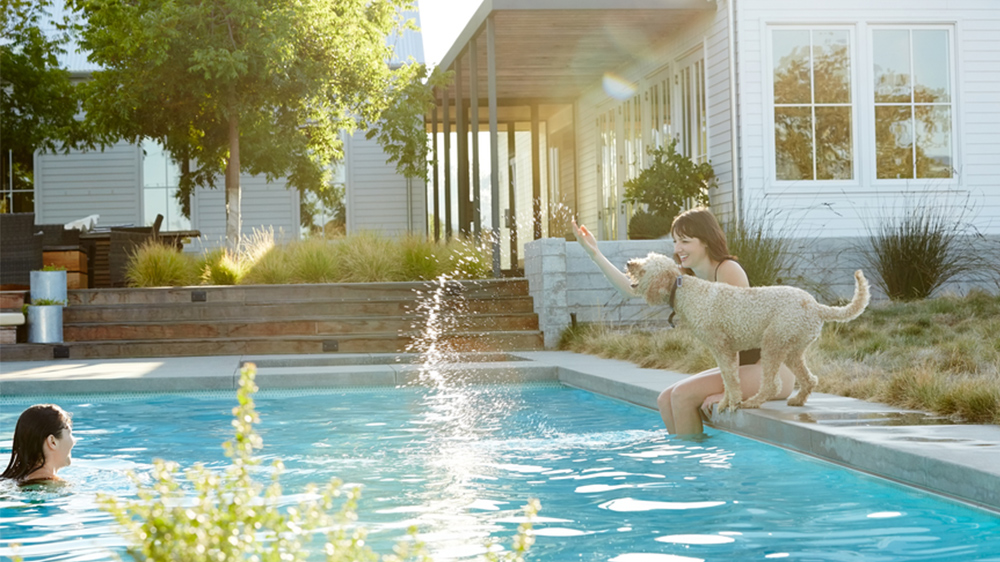

So you have settled in and ready to start exploring your new neighborhood? Check this out!
Ready or not, it’s time to jump into your brand-new lifestyle. These tips will help you find your place within your community and make it feel even more like home.
After the hard work of finding and moving into the perfect home, you’re finally ready for the best part: exploring your new neighborhood and city! Here’s what you should do in your first week, month, and year in a new place to help make it your home sweet home.
The first week: Organize and settle in
-
Get your bills in order.
You probably had the essentials switched over to your name so you wouldn’t be without them on move-in day. But you’ll need to make appointments for other services, like cable or home security, right after you move in. Other essentials may also have slipped off your radar, like neighborhood trash pickup dates, suggests Michael Kelczewski, a real estate agent with Brandywine Fine Properties Sotheby’s International Realty in Wilmington, DE.
-
Find your local resources.
No matter how organized you are, there will be items, like extension cords and towel rods, that you will need to pick up quickly to make sure that you feel settled, says Joan Kagan, sales manager at TripleMint Real Estate in New York, NY. Your first week is the best time to seek out these essentials and more. You’ll no doubt become well-acquainted with the nearby hardware store, but you’ll also want to stock that new fridge at the local grocery store, make friends with the barista at the neighborhood coffee shop, and hit the closest post office to have your mail forwarded.
-
Meet the neighbors.
This will give you some comfort in knowing who is around you, says Pat Eberle of RASO Realty in Cape Coral, FL. Neighbors are a great resource for [discovering] where all the local hot spots are, where to go for necessary services, and more. If you have children, this will also help them meet the neighborhood kids their age and start making friends.
-
Find your community online.
Nextdoor and neighborhood or community groups on Facebook are an easy way to start following what’s happening in your new neighborhood. A subscription to the local city magazine can’t hurt either. This way, you can stay on top of community events, safety issues, and meet more neighbors! says Lisa Sinn, a real estate agent with Keller Williams in San Antonio, TX. Want to untether from the laptop? Head to your local library or coffee shop and scope out the bulletin boards for upcoming events or local businesses to try.
-
Study the rules.
Before you jump into those home improvement projects, make sure they’re not against the rules of your homeowners association (HOA) or local zoning laws. If you live in a historic district, you may even have to get your paint colors approved! And be careful not to overlook those easy-to-forget loose ends. During your home-buying process, there are lots of deadlines and time frames to be aware of, explains Eberle. After closing, you will also need to check on items like your property taxes, can you request a homestead exemption, etc.
The first month: Explore and grow
-
Dine like a local.
Try different restaurants, supermarkets, coffee shops, and bars in the neighborhood, says Kagan. One of the great things about living in a city like New York is the great variety of resources within walking distance. You can choose your favorites and start to build a community.
-
Extend invites.
The sooner you make friends in a new city, the sooner it will start to feel like home. When people find out that you are moving to New York, they will tell you about their college roommate’s niece, their brother-in-law’s cousin, their former baby sitter, all of whom have moved to New York, says Kagan. Whether you live in the city or in a more suburban area, don’t roll your eyes at these connections. Make the effort to get together with all of them they will invite you to meet others and share their tips.
-
Follow your interests.
Local charities are always looking for volunteers and church groups are always looking for new members. City recreation facilities often offer classes for kids and adults. This can also be a great way to meet other locals that have similar interests.
-
Pitch in.
Offering to assist a neighbor with a project can also be a great way to break into the neighborhood. If you are in a cold area with snow, help with snow removal. If you are where the weather is nice, help with lawn mowing, trimming, raking leaves, or other projects. The favor will likely be returned in the future!
-
Meet your HOA president.
This person can be a great ally when it comes to neighbors breaking the rules (ahem, not mowing their lawns, partying too loudly, etc.). Get to know them well, advises Sinn, so you can get your voice heard.
The first year: Practice good citizenship
-
Take advantage of your city.
You chose your neighborhood for its character, proximity to work, or its other perks. Now’s the time to explore other neighborhoods nearby for hidden gems. Go to the theater! Visit museums and concerts. Take advantage of your town’s amazing parks! says Kagan. Explore a different neighborhood every month. Knowing your city better will help you feel more connected and give you even more favorite places to come back to again and again.
-
Start a group.
Make an effort to stay connected with your neighbors, even if you don’t click right away. In the first year in a neighborhood, you will find that some of your neighbors and you will click and they will become friends. They’re a built-in source of information and support nearby. To stay in touch, launch a book club, dinner club, or other type of regular get-together on a schedule that works for everyone. It’s a low-pressure way to forge a deeper connection with those around you.
-
Host for a holiday.
Pick a holiday and plan an event in your home. Invite the neighbors or friends from unconnected groups. Think of it as your own mixer. Who knows? Maybe you’ll inspire some more friends to move to your neighborhood and make next year’s parties even better.
-
Attend HOA meetings.
Attend as many as possible so you’re aware of exactly what’s happening in your community regularly, says Sinn. If you have time, you might consider joining in a more official capacity, which lets you contribute to future plans and provides insights into neighborhood changes.
-
Make goals for next year.
Reflect on your first year in your new neighborhood and make goals for the next one. Would you like to get more involved, perhaps in a leadership role with your HOA? Have you noticed congestion or traffic issues that you could work with your neighbors to resolve? Maybe you’d like to support a local nonprofit or school by organizing a 5K race through your neighborhood. Or perhaps there’s a beautification effort you could launch. Whatever you choose, you’ll be on a path to deepen your involvement in your community.
Source: Trulia Blog
Do You Know How to Prep Your Home For Summer?


Summertime….and the living is easy! If you know how to prep for it!
Our friends at HomeAdvisor 5 important steps for prepping your home for summer.
While summertime is perfect for outdoor gatherings with friends and family, it can also be a dangerous, and inefficient, time for your home. That’s why it’s important to have a preparation strategy in place before the hotter months arrive. These quick tips will help you prep your home for summer, and ensure it stays safe and inviting all summer long.
Schedule an Air Conditioning (AC) Inspection
Suffering through the hottest summer months with no AC isn’t fun, especially if you’re playing host to friends or family. Having an AC professional look at your unit before summer officially arrives will address any potential problems before they become major headaches. You can also DIY some preliminary maintenance. Clearing saplings, grass and other underbrush away from your unit will improve airflow and help prevent clogs. Replacing the air filters in your home’s HVAC will also help your AC function at its peak efficiency.
Look for Insulation Leaks and Inefficiencies
Poor insulation will allow cooled air to escape, resulting in a hot home and enormous energy bills. Fortunately, spotting faulty insulation isn’t difficult. Begin by looking for deterioration around your doors and windows. Caulk, door sweeps and weather stripping should address the majority of your door- and window-related leaks. It’s also a good idea to have a professional perform an energy audit. Pros will be able to identify hard-to-spot inefficiencies in other parts of your home and HVAC system.
Prep for Pests
It wouldn’t be summer without pests. And in addition to being an annoyance, some pests can actually damage your home and even present health problems. Spraying insect barriers around the exterior of your home is a good beginning, but it’s also important to prep the interior of your home. Sealing all food sources and potential entry points like window frames and doors is an important part of finalizing your pest proofing.
P.S. Be sure to read any warnings or instructions that come with pesticides. Improper applications can threaten the safety of your home, especially if you have pets or small children.
Inspect Your Roof
Summer is mostly known for its beautiful weather, but it can also be a time of severe thunderstorms or worse. This makes having a sturdy roof very important, especially during inclement summertime weather. Begin your inspection by looking for loose shingles, faulty flashing or other clear signs of damage. Your attic can also be home to leaks, rot and other problems not obvious from the outside of your home. Examining your attic insulation, walls and rafters for signs of moisture will help you prevent water damage and structural deterioration. If you notice signs of damage, it’s best to call a pro. Roof repair can be extensive and are rarely DIY-appropriate.
Reinvigorate Your Outdoor Spaces
Wintertime can take a toll on the appearance of your yard, patio and other outdoor living areas. Removing downed tree limbs, replanting dead flowers and power washing your patio and decking are simple ways to jumpstart your home’s summertime exterior. Your grill can also accumulate gunk during the colder months. Be sure to clean its interior and exterior before your first BBQ. Updating your tired outdoor furniture will also improve the looks and comfort of your entertainment areas. Wrap-around sofas, comfy loveseats and luxurious hammocks are ideal additions to any outdoor space. You can perfect your entertainment areas with colorful throw pillows, planters, hanging candles and outdoor lighting.
Source: CB Blue Matter
Coldwell Banker Real Estate Gets Vocal – Announcing Our First Amazon Alexa Skill


Smart Home Ready! Meet Alexa and Coldwell Bankers first Alexa skill!
Coldwell Banker teamed up with Amazon’s Alexa to create its first Alexa skill, an extension of the popular Home of the Week series.
We’ve all heard that real estate is local, but Coldwell Banker has put its own spin on the adage, declaring all real estate is Vocal by announcing its first Amazon Alexa Skill, which will be available by the end of June.
What’s a Skill? An Amazon Alexa Skill is essentially an app for Amazon’s voice controlled Echo speakers.
How does it work? By prompting Amazon’s voice assistant with Alexa, Ask Coldwell Banker for the Home of the Week,users will hear a one-minute description of a featured Coldwell Banker listing and can be connected to their local Coldwell Banker office. The Skill is an extension of the Home of the Week video series which profiles the hottest Coldwell Banker listings each week.
Why develop the Skill? Consumer demand spurred development of the skill after a January Coldwell Banker survey found that 72% of consumers with smart home tech wanted voice control products. Coldwell Banker also surveyed nearly 1,000 Coldwell Banker real estate professionals and found that 79% of respondents report that home buyers are interested in smart home technology, underscoring growing demand for voice controlled assistants and other smart home devices.
Not only will this fulfill consumer demand, it will also provide agents with the ability to market their listings in a new and exciting way. Alexa users will be connected with their local Coldwell Banker office through the Alexa smartphone app.
How can I try this out for myself? If you have an Amazon Echo or Echo Dot, you can search for the Coldwell Banker Home of the Week Skill in the Amazon Alexa smartphone app, or simply ask Alexa to Enable Coldwell Banker Home of the Week later this month.
If you don’t already own an Echo or Echo Dot you’re in luck! Coldwell Banker is thrilled to announce that the Echo Dot will be joining its existing Smart Home Staging Kit alongside products from Nest, August and Lutron. Now homeowners and agents showing smart homes can control the house’s core functions through simple voice commands.
Interested in buying your own kit? Be sure to visit SmartHomeStaging.com and speak to your Coldwell Banker agent to take advantage of the exclusive promotional pricing!
So what’s next? Coldwell Banker looks forward to expanding its voice control capabilities for agents, buyers and sellers in the near future. Stay tuned!
Source: CB Blue Matter
How to Make the Most of Grilling Season


Ahhhhh, the sweet smells of summer BBQ! Nothing beats grilling and chilling!
There’s nothing better than the flavor and presentation of food cooked on a grill. The slightly smoky flavor and ease of preparation makes grilling one of the top cooking methods any time of the year. Even when there is a chill in the air, stepping outside to grill a meal is quick and easy.
Now that summer is around the corner, many of us are dining al fresco, and that often includes a grilled dish. Almost any food can be grilled, from steak to Portobello mushrooms, and occasionally a food that you wouldn’t imagine, such as thickly cut Greek cheese (Halloumi), which grills perfectly.
For those who don’t have access to an outdoor grill, I’ve had success with cast-iron indoor grilling pans. Indoor grilling pans, which can be found in any cookware store, add a depth of flavor similar to outdoor gas grilling. I own two square ones that fit over a burner and can accommodate two servings of protein or four pieces of fresh corn or sliced eggplant.
Here are some of my tips to make the most of your grilling.
What to Grill
Most important, you need to know which foods are best grilled. Any cut of meat or chicken is ideal for grilling.
For dark-meat chicken, I recommend cooking it first in the oven to get it about three quarters done and then finishing it on the grill to avoid overly dark or blackened skin. Chicken breasts cook quickly about three minutes per side. I recommend you pound the chicken to an even thickness to assure perfect doneness.
Fish is best if you choose steak fish (such as tuna, salmon, swordfish or shark) or whole fish (such as snapper or bass). Shellfish, including shrimp, scallops, clams and lobster, are wonderful on the grill and can be served room temperature or as part of a salad. I tend to avoid thin fish fillets for grilling as they are too delicate for the high heat and difficult to move off the grill.
All kinds of grilled vegetables are wonderful. My personal favorites are asparagus, mushrooms, onions, peppers, zucchini, eggplant, cauliflower, unripe tomatoes and corn. Consider buying a grill basket for smaller veggies to avoid them falling into the grill. For the vegetarians among us, both tofu and tempeh are delicious in their grilled form, especially paired with a flavorful marinade.
Get the Grill Ready
To prepare the grill, heat is of utmost importance for a guaranteed non-stick surface. If your food is not ready to turn easily, simply leave it another minute to ensure the proper sear. If you are grilling something with little to no marinade, be sure to spray the grill lightly with vegetable cooking spray or brush lightly with olive oil.
The Marinade
My favorite element in grilling is the marinade. A marinade can be as simple as vinaigrette with a few fresh herbs mixed in, and sauces such as salsas, pestos and reserved boiled marinades add a ton of flavor to just about any grilled food.
Because there’s no sauce or fat in the pan, and most grilled foods cook fairly quickly, a marinade not only tenderizes, but adds flavor. I usually marinate dishes for at least two hours at room temperature or overnight in the refrigerator, depending on what you’re preparing.
I recommend reserving the leftover marinade and bringing it to a boil in a small saucepan for four or five minutes, to kill any bacteria, along with a little red wine, if desired, and you have an amazing sauce to drizzle over your grilled dish.
There’s the Rub
Fish is one exception where the marinade can actually cook the fish, so don’t marinate fish and shellfish for more than an hour. This is where a spice rub can be the perfect flavor enhancer. I often use spice rubs for tuna, salmon or shrimp.
Simply toast a few of your favorite spices, such as cumin, mustard seeds, peppercorns and coriander. Grind them in a coffee or spice grinder, coat the fish lightly with olive oil, then sprinkle the spices and a pinch of sea salt. You’ve now elevated your fish to another level.
Grilled Bread
I love the taste of grilled bread and often serve it lightly brushed with extra virgin olive oil and rubbed with a cut clove of garlic, as you might enjoy in Tuscany. Grill the bread for three or four minutes on each side and serve with chopped tomatoes, olives and mushrooms, or, serve it plain, with a few shavings of Parmigiano-Reggiano. I often make hummus or a spread, such as a white bean puree, to serve guests while they are having a chilled glass of wine.
Source: RisMedia

 Facebook
Facebook
 X
X
 Pinterest
Pinterest
 Copy Link
Copy Link
